 W
WAbington Park, in the Abington district of Northampton, has lakes, aviaries, and a museum, as well as trees and grassy open spaces.
 W
WBarnet Museum is in the London Borough of Barnet. It has displays on topics including the Battle of Barnet, Barnet Fair and Market. It is a centre for local and family research and its archives, library and reference collection are available for use by members of the public.
 W
WThe Bowes Museum has a nationally renowned art collection and is situated in the town of Barnard Castle, Teesdale, County Durham, England.
 W
WBrighton Museum & Art Gallery is a municipally-owned public museum and art gallery in the city of Brighton and Hove in the South East of England. It is part of the "Royal Pavilion & Museums, Brighton and Hove". It is free for local residents but charges £6.20 per non-resident.
 W
WDalgarven Mill is near Kilwinning, in the Garnock Valley, North Ayrshire, Scotland and it is home to the Museum of Ayrshire Country Life and Costume. The watermill has been completely restored over a number of years and is run by the independent Dalgarven Mill Trust.
 W
WThe Devonshire Collection of Period Costume is a collection of historic costumes housed in the Totnes Fashion and Textiles Museum in the town of Totnes, south Devon, in southwest England.
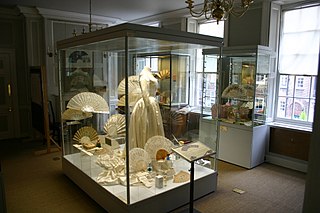 W
WThe Fan Museum, which opened in 1991, is the world's first museum dedicated to the preservation and display of hand fans. It is located within two grade II* listed houses that were built in 1721 within the Greenwich World Heritage Site in southeast London, England. Along with the museum, there is an orangery decorated with murals, a Japanese-style garden with a fan-shaped parterre, a pond, and a stream.
 W
WThe Fashion and Textile Museum is the only museum in the UK dedicated to showcasing contemporary fashion and textile design. The Museum is committed to presenting varied, creative and engaging exhibitions, alongside an exciting selection of educational courses, talks, events and workshops. In place of a permanent collection is a diverse programme of temporary exhibitions, displaying a broad range of innovative fashion and textiles from designers and makers around the world.
 W
WThe Fashion Museum is housed in the Assembly Rooms in Bath, Somerset, England.
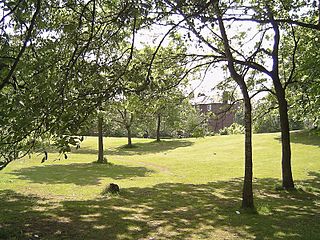 W
WPlatt Fields Park is a large public park in Fallowfield, Manchester, England which is home to Platt Hall. Fallowfield lies to the south and Wilmslow Road runs along its eastern edge.
 W
WThe Hat Works is a museum in Stockport, Greater Manchester, England, which opened in 2000. Before that, smaller displays of hatting equipment were exhibited in Stockport Museum and in the former Battersby hat factory.
 W
WHorsham Museum is a museum at Horsham, West Sussex, in South East England. It was founded in August 1893 by volunteers of the Free Christian Church and became part of Horsham District Council in 1974. It is a fully accredited museum and serves both Horsham and its district with the support of the Friends of Horsham Museum and an active volunteer base.
 W
WKillerton is an 18th-century house in Broadclyst, Exeter, Devon, England, which, with its hillside garden and estate, has been owned by the National Trust since 1944 and is open to the public. The National Trust displays the house as a comfortable home. On display in the house is a collection of 18th- to 20th-century costumes, originally known as the Paulise de Bush collection, shown in period rooms.
 W
WThe Lace Guild is a registered charity, accredited museum and educational organisation based in the UK for lacemakers and those interested in lacemaking. Its aims are to provide information about the craft of lacemaking, its history and use, to promote a high standard of lacemaking, and to encourage the design, development and professional presentation of lace. It is a registered educational charity.
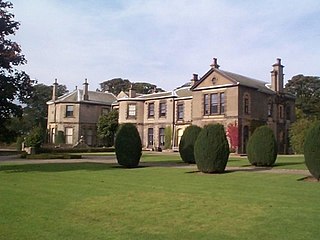 W
WLotherton Hall is a country house near Aberford, West Yorkshire, England. It lies a short distance from the A1(M) motorway, 200 miles (320 km) equidistant between London and Edinburgh. It is one of nine sites in the Leeds Museums & Galleries group.
 W
WMaidstone Museum is a local authority-run museum located in Maidstone, Kent, England, featuring internationally important collections including fine art, natural history, and human history. The museum is one of three operated by Maidstone Borough Council. The building is Grade II* listed.
 W
WMuseum of Cornish Life is a museum situated in the former market town of Helston, Cornwall, England, United Kingdom. It is located immediately behind Helston Guildhall.
 W
WThe Museum of the Jewellery Quarter is a museum at 75-79 Vyse Street in Hockley, Birmingham, England. It is one of the nine museums run by the Birmingham Museums Trust, the largest independent museums trust in the United Kingdom.
 W
WThe National Museum of Costume was located at Shambellie House, in New Abbey, Dumfries and Galloway, Scotland and it formed part of the National Museums of Scotland. The museum allowed a look at fashion and the lifestyle of the wealthy from the 1850s to the 1950s. The clothes were presented in lifelike room settings. In January 2013, National Museums Scotland announced that the National Museum of Costume was to close and the site would not reopen for 2013.
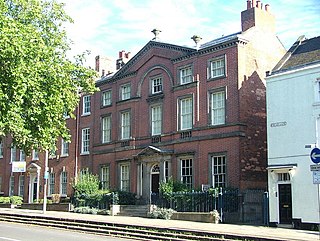 W
WPickford's House Museum of Georgian Life and Costume is in Derby, England. It is named after architect Joseph Pickford, who built it as his family home in 1770. It was opened as a museum in 1988. The building is Grade I listed.
 W
WSir George Skene of Fintray (1619–1708) was a Scottish merchant in the Baltic trade who served as Provost of the city of Aberdeen from 1676 to 1685. He was knighted in 1681.
 W
WThe Salisbury Museum is a museum in Salisbury, Wiltshire, England. It houses one of the best collections relating to Stonehenge and local archaeology.
 W
WSnibston is an area east of Ravenstone, north west Leicestershire, in the English Midlands. Originally rural, part of Snibston was transformed into a coal mining village by the opening of coal mines by the Snibston Colliery Company in the early 1830s. This industrial part of Snibston was subsequently subsumed into the developing town of Coalville, though small rural areas of Snibston survive within the civil parishes of Ravenstone with Snibston and Hugglescote and Donington le Heath. In the part of Snibston within the latter civil parish stands the 13th-century church of St Mary, noted as the smallest church still in use for regular worship in England. The main Snibston Colliery was sunk in 1831, and after its closure the Snibston Country Park with the Snibston Discovery Museum was built on part of the colliery site. Part of the park is Snibston Grange Local Nature Reserve. The population is included in the civil parish of Ravenstone with Snibston.
 W
WSpringhill is a 17th-century plantation house in the townland of Ballindrum near Moneymore, County Londonderry in Northern Ireland. It has been the property of the National Trust since 1957 and, in addition to the house, gardens and park, there is a costume collection and a purported ghost. It is open from March to June, and September on weekends, and is open to the public seven days a week during July and August.
 W
WTullie House Museum and Art Gallery is a museum in Carlisle, England. Opened by the Carlisle Corporation in 1893, the original building is a converted Jacobean mansion, with extensions added when it was converted. At first the building contained the museum and also a library, an art school and a technical school.
 W
WThe Victoria and Albert Museum in London is the world's largest museum of applied arts, decorative arts, and design, housing a permanent collection of over 2.27 million objects. It was founded in 1852 and named after Queen Victoria and Prince Albert.
 W
WWardown House Museum and Gallery formerly Wardown Park Museum and, before that, the Luton Museum & Art Gallery in Luton, is housed in a large Victorian mansion in Wardown Park on the outskirts of the town centre. The museum collection focuses on the traditional crafts of Bedfordshire, notably lace-making and hat-making. There are samples of Bedfordshire lace from as early as the 17th century.
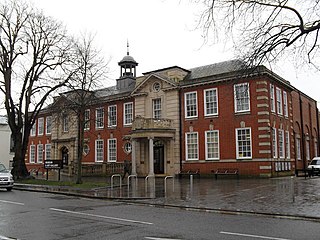 W
WWorthing Museum and Art Gallery is in the centre of Worthing near the grade II* listed St Paul's. The building, which celebrated its centenary in 2008, was originally designed to house the town's library as well as the museum, the library section being funded by Andrew Carnegie. It is the largest museum in West Sussex.